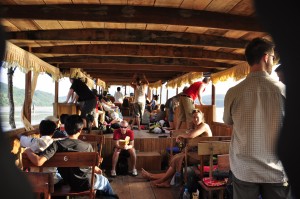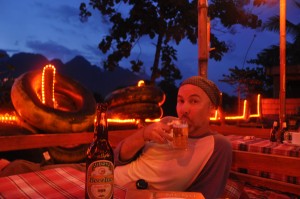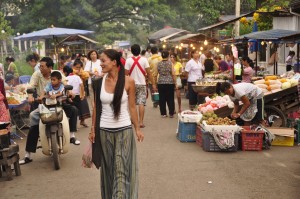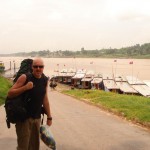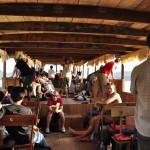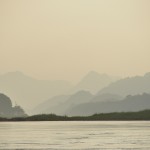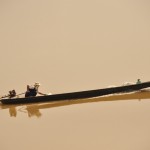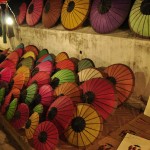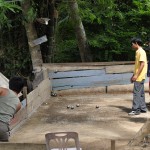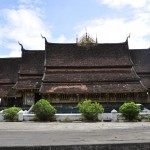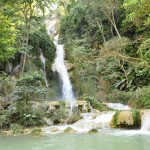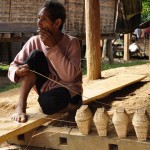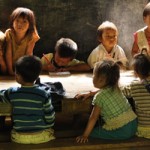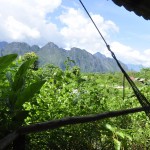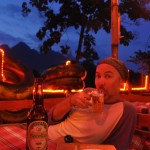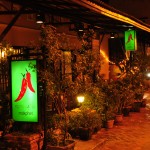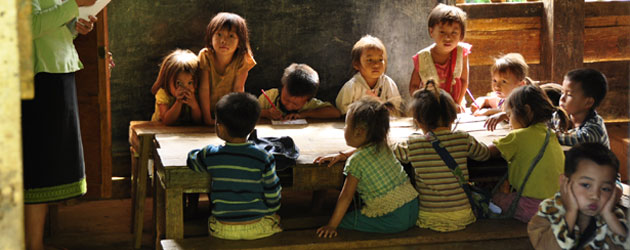Annapurna Trek Part 3: The Pass, a Proposal & the descent
Day 10 – Thorung Pedi to Muktinath (10 Hours trek, 16km, Ascend 1,000m, Descend 1,600m)
We got up at about 4.30 am – the cold, altitude, nightly toilet calls and early risers all around us, conspiring against any serious attempt at sleep. Armed with headlamps, innumerable layers, tea & bread we set off around 5.30 and started the slow, arduous climb up to high camp. The cold was immense and quickly permeated the dual layers of socks and my feeble apology for gloves, leaving everything numb. About halfway up the hill as the sky started to lighten, we saw other lights below us and closing quickly – a team of Israeli’s we had seen at breakfast. We struggled slowly forward, resting every 20 or so metres and expecting to be passed any second, but they never seemed to arrive. Later we found out from other trekkers, that 2 of the Israeli girls had suffered altitude sickness suddenly and one had collapsed, unconscious and had to be taken back down by horse.
Fortunately, we didn’t know this and our AMS fears were happily subsumed by the simple focus on breathing and the next step in front. Reaching the High Camp after an hour, we pushed on optimistically to a Teahouse, a few hours or so further along the path. Everything was buried in snow now, our path included, at times almost impossible to discern, despite the many early risers that had already gone through. The sun failed to materialize and the cloudy, overcast sky neglected to provide any relief to our freezing extremities. Above, lonely, snow covered peaks towered overhead, crested with thick layers of blue ice, perfect time capsules from many ages past. As we continued to slowly ascend over a series of hills, breathing became more and more difficult and we were now forced to stop every 10 or 20m. Almost entirely without conversation, we soldiered on mechanically, empathetically bonding with other trekkers as we passed them – a Korean guy, 2 older American women, an eccentric French woman and several others, many of whom we had met before.
Reaching the Teahouse, we dived in, glad of the respite. A small, dirty hut the teahouse interior was black from fires past and covered in rubbish and blackened blankets. An Israeli guy was inside, happily sheltering with his girlfriend – “Hey, did you see my toes?” was his welcome. Happy just to be out of the wind, we joined them and several porters shivering inside, ordered a hot tea and set about reviving hands and feet. The tea was a warming and necessary re-hydrant – our 3 water bottles had all frozen within 20 minutes of our start that morning, so we had been running dry as we would have to for most of the day.
After a 10 minute stop, we charged on, keen to keep moving and get this out of the way. Returning to the cold and the climb was daunting, but we slowly warmed up and fell into rhythm. I jumped to the front and was leading – trying to drive things steadily forward; thoughts firmly fixed and motivated by the summit.
I had determined back in Pokhara that I would propose to Megumi at the top. I had always intended to do it at some special point during our trip and when I was researching the trek it had seemed full of romantic promise – the highest point in our lives etc. I had though envisioned a bright, sunny day & us riding the high of the pass conquest, perhaps surprising her while posing for a photo at the top. I had even recruited the help of a Tibetan lady back in Pokhara to help find an interesting ring to mark the occasion. A cheap, green malachite stone, framed in silver it was a long way short of a diamond most definitely, by still quite symbolic (and practical given our travels), I could feel it burning a hole in my pocket where I had hidden it safely weeks ago awaiting this moment.
It was all so different now though – bitterly cold, windy and grim with determination, it felt a long way from any mood of celebration. Still I was determined to go through with it and this kept me going; brimming with love, thoughts and possible scenarios as I wondered where / how I would get the opportunity and how she would react given the circumstances. Around every new corner in the path a wind had was lurking – horrendously cold and loaded with fine ice like sandpaper – it rushed off the slopes and at times almost blasted us backwards as we walked. We had hoped to beat this wind (usually it peaked around 11am hence the early start), but over the last hour or so of the climb it seemed to grow in intensity adding a ferocious wind chill to the already substantial sub-zero temperatures.
Suddenly as we rounded a final bend, we could see a stack of Prayer Flags and a large rock cairn and knew we had reached the Thorung La pass and summit. Leading by a little way now, I stopped in front of the cairn, which was acting as a windbreak to wait for Megumi and saw Karna scurry off in the background for a toilet stop. I looked closely at Megumi – she was exhausted and barely able to breathe, she had been fantastically upbeat and in her element all trip, but she really looked close to the end of her tether here. I waited for her to arrive and gave her a huge hug of support and congratulations. And as she turned around to look for Karna, I took the chance to drop to a knee, prize a frozen glove off and somehow dig the ring out of its wrapping with my numb fingers. When she turned back to look at me, I managed to squeeze out the all important words – she was truly surprised and speechless. As it slowly sank in, she kind of nodded and then started crying, the tears visibly freezing into icy trails as they ran down her face. Panicked at this, I tried to settle her down and as Karna reappeared and the wind surged again, we quickly ran across to shelter in the teahouse.
Quickly arming ourselves with more of the world’s most expensive, but vital tea we collapsed into the tea-house – a tiny, dirty wooden shed with room for about 8 or so trekkers. We were mostly quiet, but all completely satisfied in our own way – me happy to have actually managed the proposal and made the top; Megumi glowing and seemingly subsumed by and processing her newfound status with loving smiles and much fondling of the ring; even Karna was simply glad to have made the pass without any trouble and issues with the hole in his shoe. The eccentric Frenchwomen, another older couple and several porters also made an appearance with warm though tempered greetings. After 5 minutes, some readjusting of our gear and a couple of deep breaths we decided to push on to warmer, lower climes as soon as we could and after a few quick photo’s to mark the moment (the camera was frozen & barely working), we forged back into the icy wind and began the journey down.
Still beset by the wind, the path continued gently downward for another 3km, slowly revealing the stunning vista’s of Mustang – a spectacular fusion of snow peaks and brown valleys. Although still numb from the cold, we made good time now that we were breathing normally and were soon descending back below the snowline. The path then became very steep and often precariously covered in gravel and ice. With gravity on our side, we slipped and slid down cliff-faces and danced dangerously along ridge tops, contentedly rejoicing in our ability to breathe normally again.
For more than 3 hours, we plunged downhill into the dusty valleys, attracted like moths to the distant sight of the villages, until finally we reached a teahouse and feasted on some soup – our first real meal of the day apart from chocolate and energy bars. Another hour and we arrived in Muktinath, Nepal’s second most famous Hindu site and Buddhist temple where the hills were covered in cobwebs of prayer flags. With barely a sideways glance at the temples, we quickly stormed past the pilgrims and trinkets stalls to our destination, the Bob Marley Guesthouse.
Completely exhausted, the guesthouse was like an oasis. Basking in our first hot shower in 6 days along with carpeted rooms, mirrors and an open fireplace; we ordered a series of beers to celebrate simply arriving and the successful conquest of the pass with Karna. Many other trekkers soon arrived and we greeted each warmly, familiar faces now and comrades in arms – language and cultural barriers all momentarily a thing of the past. Later, we pulled ourselves away from the fire to have dinner and reluctantly reporting upstairs we were thrust in front of another couple by the Nepali staff. Somewhat uncomfortable and kind of craving a private table given the occasion, we happily discovered the reason for the forced intimacy- the table was heated by coals beneath, a kind of dining table ‘kotatsu’; even better though the other couple were 2 Aussies from Perth, Lindz and Catie and of particularly good humour – which had been about the only thing really missing from the trek so far. Cheered by familiar Aussie banter, good food, a few beverages and the warmth, Megumi decided to order a celebratory “Hot Bob Special”, only to discover that the hot chocolate, rum concoction she had just drained also contained marijuana – a fact which promptly forced her early retirement. I decided to stay on chatting with the couple and some other trekkers and in the process of the conversation casually remarked (in line with my own realization), that I had proposed earlier that day. The news met was met with heartfelt congratulations and sharing of other engagement tales which gave me some time to finally reflect. Funny how that happens though, it was such an immense day – physically, psychologically and mentally – that the engagement itself had really represented a very, small part in it all and it was only really then, actually talking about it for the first time with strangers that it seemed to become real somehow. It has loomed larger ever since of course and the crossing itself has faded more and more into the background in comparison, but it certainly did not feel that way then.
Day 11 – Muktinath to Kagbeni (4 Hours trek, 6km, 1,000m descent)
The next day, after a well deserved sleep in of sorts, we assaulted our much maligned muscles with the climb back up the path to the Muktinath and explored the complex with Karna. He took us on a tour of the Hindi & Buddhist temples and sacred site (fire actually gas naturally comes out of a stream here, all cased inside a Buddhist temple). Amazing though that these 2 religions can so perfectly share the same sacred sites like this; if only Jews and Muslims could do the same?
Afterwards, we gathered our things and began our casual walk down the valley to Kagbeni. This was possibly the most splendid day of sightseeing of the entire trek, the great brown, valleys of Mustang; with their hilltop monasteries and medieval towns all provided a spectacular backdrop to our relaxed and roaming minds. As we plodded downhill, behind us the peak of Thorung La became clearly visible and every step seemed to yield a new and greater view of the descent we had made the day before. Ahead in the distance the massive peaks of Dailgiri and Nilgiri beckoned and the valley opened up into a steep ravine – the eroded walls of the Jhong Khola river, home to innumerable caves and fascinating rock formations
Stopping briefly at the small town of Jharkhot to explore the 500 year old Tibetan monastery and ruins of a fort, we arrived in Kagbeni early afternoon. Kagbeni is where the Khola river meets the mighty Kali Gandaki river and acts as a gateway to Upper Mustang. Our arrival was greeted by a shrill, dusty wind that echoed along the river floor with gusts that almost took us off our feet on the descent into the village. After checking into the Asian Trekkers Inn and magically procuring a room with our own bathroom, we explored the town – revelling in the tiny, winding medieval back alleys, ancient gompa and houses with first floor stables. One side of town provides fantastic views of the forbidden zone – Upper Mustang and several restaurants tempt with their quaintness, most particularly “YakDonalds”. At dinner back at the Inn, we were happy to reacquaint ourselves with Catie & Lindz, the Aussie couple from Bob Marley and together with an eccentric Spanish woman managed to happily trade tales, til late in the evening fired perhaps by warmth of another dinner table kotatsu.
Day 12 – Kagbeni to Marpha (5 Hours trek, 15km)
The following day we walked along the 1km wide Kali Gandaki river bed to Jomson, setting out early in order to arrive ahead of the noon wind that we had experienced the previous evening. After more stupendous views and rock formations along the ravine floor we reach Jomson, our most civilized stop on route and home to an “airstrip”. We hungrily fall upon the ATM (the only one in the entire trek) to replenish our wallets for the first time since the start of our journey; somehow we had managed to budget everything to perfection to get there, but there was precious little room for the unplanned. Here we also ran into several other fellow trekkers from the crossing and before – several seemed to be fatigued and getting sick – bodies in a state of collapse after the stresses of the crossing. Whereas for the last dozen days, we had all been forced to more or less mirror each others pace and progress, now with advent of jeep roads, planes and pleasant environs – our paths would all dramatically diverge. We said some goodbyes and then take lunch overlooking the Nigiri mountain range, chatting to an old, retired Japanese couple who had just seen their flight cancelled by the same winds we had walked hard to avoid.
The 2 hour walk to Marpha was much harder than planned. Buffeted by the winds along the valley floor, our dusk masks firmly in place as though in a Western, at times we made little headway at all – almost walking to s standstill. Marpha was worth it though – a beautiful, quaint little town famous for its monastery and Apple orchards. With a little shopping around, we secured a large sunny room with bathroom & courtyard, overlooking an Apple orchard and were able to do some washing for the first time in more than a week. Exploring the town later was a real treat – the streets perfectly clean and lined with Tibetan giftshops, the houses and guesthouses all neat whitewashed and beautifully presented. A beautiful Gompa and meditation centre dominated the township and a walk up the stairs to the temple yielded stunning views. In the meditation centre, young monks were busy practicing chanting mantra’s and an old lama invited us to his meditation chamber – peaceful and incredibly tranquil he sat in a trance, eyes closed lost in his chanting – unable to match the peace for long, we prize ourselves away with great reluctance.
For the following day, we had decided to skip a couple of days walking and catch a bus to Tatopani Hot Springs, as Megumi’s knee had not fully recovered from the descent down the pass (Actually I think she just wanted to fast track the hot springs). With the prospect of Karna not having to carry a pack the next day as a result, we were able to celebrate with a few beers and some Apple brandy late in to the evening, along with another young Sherpa who was staying at the same guesthouse having just returned from a failed attempt with a large French party at climbing nearby Mt Tuchre.
Day 13 – Marpha to Tatopani (4 Hours drive, 30 km, 1,000m descent)
The bus to Tatopani required an early start and unfortunately, a very tight fitting seat. Apart from an Israeli couple and 2 English girls, the rest of the passengers were largely local and young. All seemed in possession of large bags, boxes and bottles of Apple brandy for sale at some larger township down the valley somewhere. At one point, we had to stop for half an hour while everyone on the bus investigated their respective stash in an attempt to locate the leak that was working its way down the centre of the bus. The culprit it turned out was a 4 litre plastic oil can filled with Brandy – as a result of the bumpy bus ride it had swollen to the shape of a soccer ball and on removal from its plastic hiding place proceeded to arc an alcoholic stream several metres distant.
After 4 hours of anaerobic jerking, down a cliff-side track most backs will usually protest, mine actually went on complete strike – so our arrival at the Hotspring in Tatopani was intensely welcome. The Hot spring as it turns out was a small concrete pool down by the river, that while pleasantly warm was certainly a long way from the Japanese onsen that I had envisioned. Megumi though, was not in the least put off and happily wiled away the afternoon, under the fascinated eyes of the other porters, all reporting in to the hot spring for a big scrub ahead of their respective returns to civilization.
Later in the afternoon, we sat in a small local house drinking glasses of Chyang and interacting with a local family and their baby child, while another studied economics. Megumi was playing professional photographer and had everyone posing for portraits that we promised to send later on. Happily content as the day slipped away, one of the Belgians from a group we had got to know at the start of the trek stuck his head in to enquire after our crossing. After telling him of our engagement, he extended his congratulations and told us that the high altitude had also triggered a similar resolve in him. Having taken the trip originally to escape with his mates, he had had a moment of clarity and intended to rush home to propose to his long term girlfriend.
Day 14 – Tatopani to Pokhara (8 Hours drive, 50km)
Originally, we had planned to hike across to Gorepani and complete our circuit with the stunning, central view of the mountains we had just circumnavigated. Unfortunately though, this now represented a steep 8 hour ascent and an equally intense descent and Megumi felt her knee really wasn’t up to it. Truth be told post pass, conquest, the onsen and everything else I was exaactly jumping out of my skin either.
Instead, (and in my case accompanied by stomach cramps), we braved the local road and back protests to take a Jeep down the mountainside. This actually required flagging a lift, after a 2 hour stakeout for a bus that wouldn’t leave without a full complement of passengers failed to materialize (we had 6, they needed 15 to move). The entire 2 hour trip down the cliff face was then spent mesmerized by the charms of 2 funky 20 something Nepali jeepsters, as they proceeded to almost surf the vehicle down the rough mountain passes. This was enacted through a series of smooth, well-practiced manoeuvres such as trading places without stopping the vehicle (1 would open the door, step out onto the bonnet and walk across to the passenger door, while the other simply slid into the drivers seat); pausing along the road to jump from jeep onto a wall to collect fresh mandarins from a tree; down to the sharing of a scammed cigarette from passing villagers and the procuring of fares and cargo from locals as they passed through villages; everything had the seamless flow that comes from a genuine, relaxed & fun loving demeanour – something Nepali’s seem to ooze.
At Beni, Karna took us to meet his sister’s for lunch. A tiny, 2 room concrete apartment set high into the hill and well below the poverty line, we humbly sat on straw matting on the floor and ate Dahl Baht – specially cooked for us. Then acting the photographers we again took a series of photographs of the family, which we promised to print and send, before jumping on a bus for the epic trip back to Pokhara. A little should be said on this as possible, but after 5 hours of constant vibrations, stomach cramps and seemingly endless single lane, cliff-top overtaking, reversing or passing manoeuvres in the dark, we were relieved to arrive back at our hotel around 8pm.
_____________________________________________________
This is all rather epic documentation I know, but it had been almost 15 days and it felt like so much more. So much time seemed to pass and so many things change…. Whether from the altitude or trekking experience itself and its encounters with people harking back to another age or the stunning scenery; to a new engagement and life of commitment and new friends; or the sense of satisfaction that comes from simply achieving a new physical feat and the heightened awareness / humility that perhaps comes from living without creature comforts and a fresh changes of clothes. You learn so much about yourself without trying too hard sometimes and upon returning, all these thoughts and experiences seem to swim around me like parts of a new suit, waiting to be properly fitted. I can’t wait for it to settle and to take it all for its next walk!
- Bus agony
- Karna & Family
- Tatopani Locals
- Chang Production
- Tatopani View
- Tatopani Hotspring
- Local Sport
- Braving the bus
- Trainee Chanting
- Monastery view, Marpha
- Kali Gandaki River
- Forbidden Mustang
- Upper Mustang, Kagbeni
- Door decal
- Yakdonalds
- Annimist sculpture?
- Kagbeni alleyway
- Kagbeni entry
- Jhong Kola
- Water Heater
- Jharkot
- The Ring
- Muktinath Gate
- Muktinath
- Gazing into Mustang
- Thorung La
- Newly Engaged
- Trail views
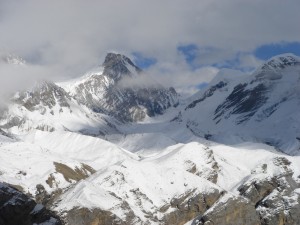
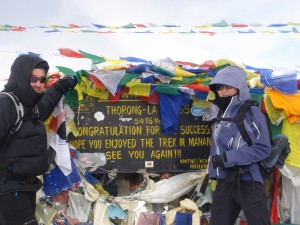

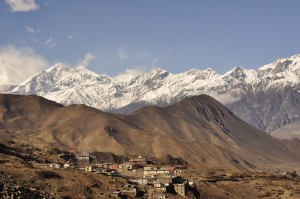

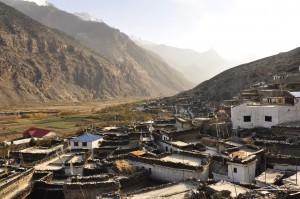
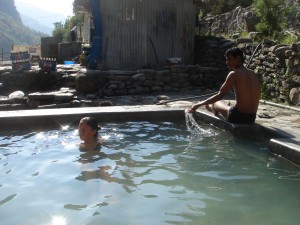

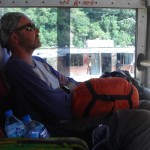
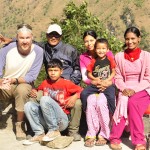
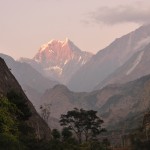

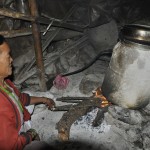
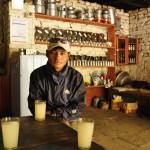

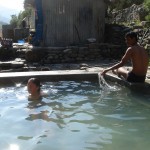
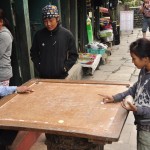
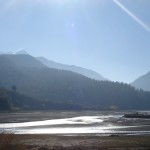


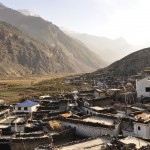
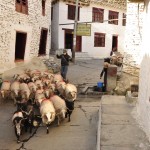

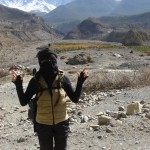
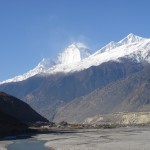
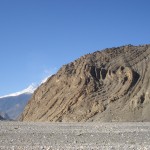
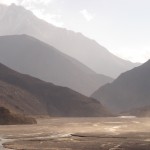
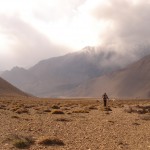
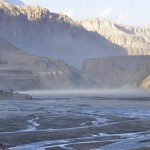
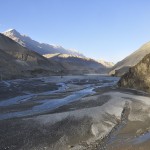
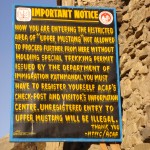
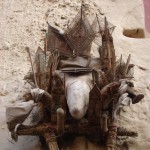
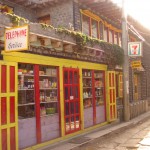

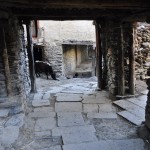
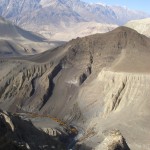
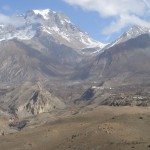
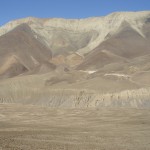
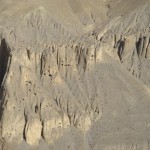

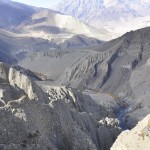
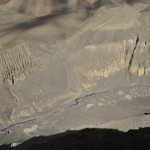
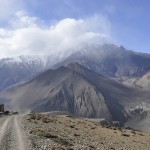
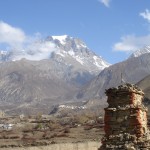
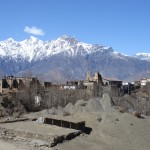


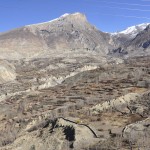
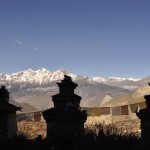
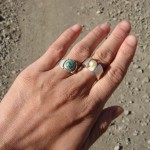
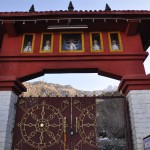

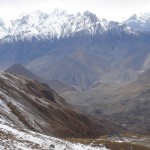
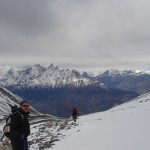
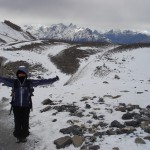
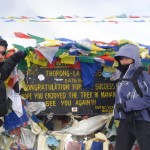
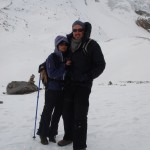
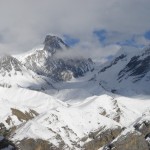

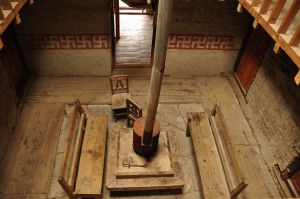
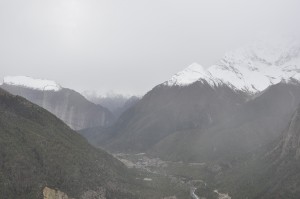

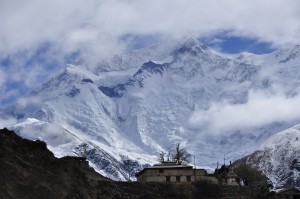

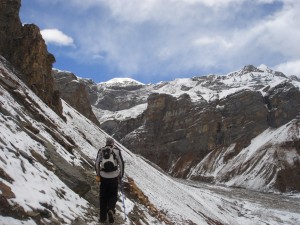
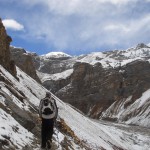
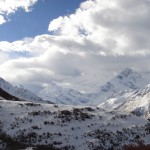
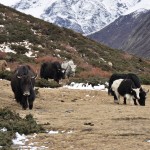

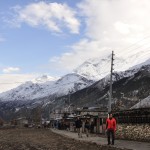

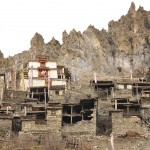
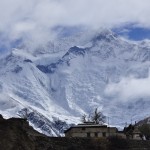
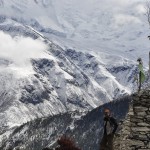
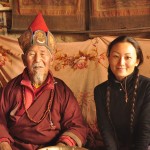
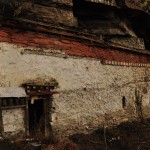
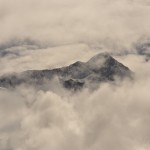


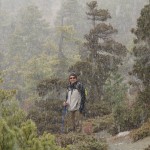
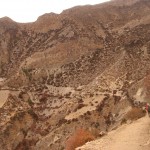
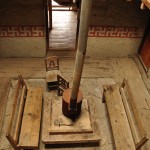

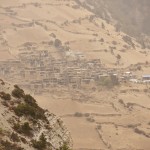
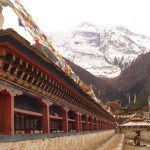
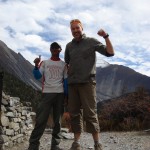
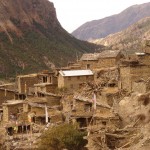
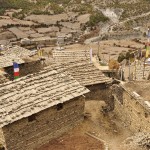
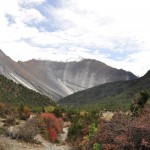

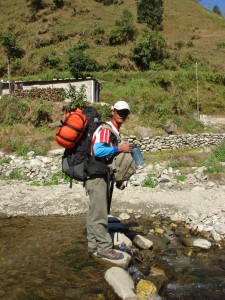

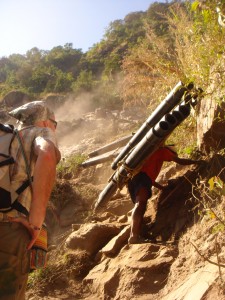
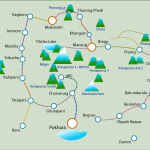
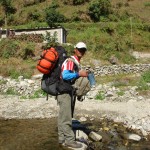
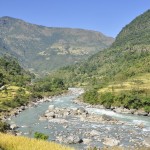
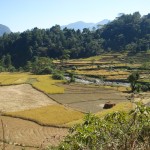
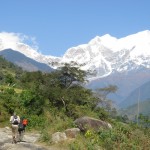
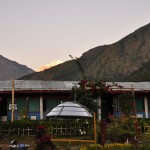
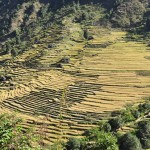
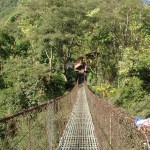
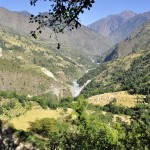
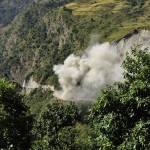
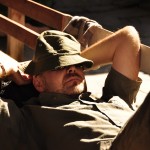
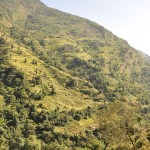
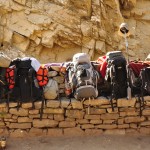
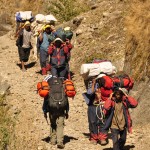
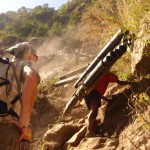
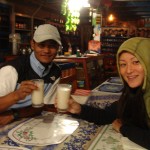


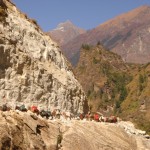
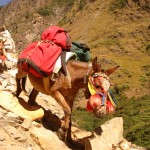
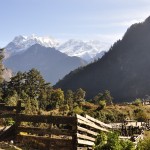
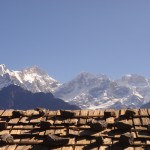
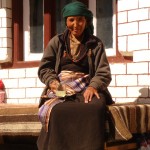

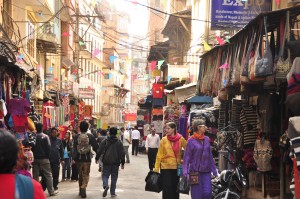
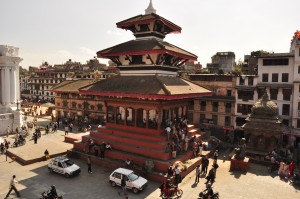
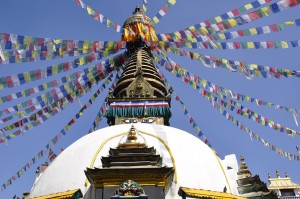
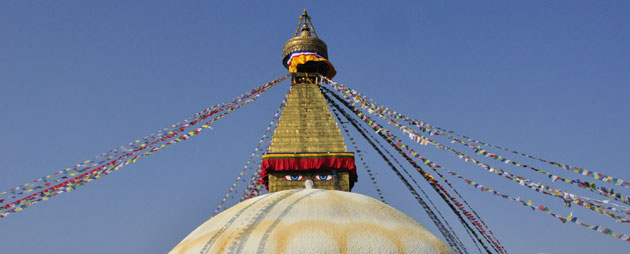
![Touring Laos After the excitement and surprise of Myanmar, Laos turned out to be a totally different adventure again. From Bangkok, we caught the overnight sleeper train […]](http://meltingplots.com/wp-content/uploads/2009/10/Hmong_Chillis.jpg)
